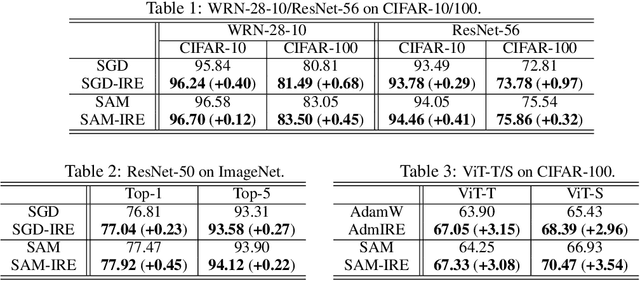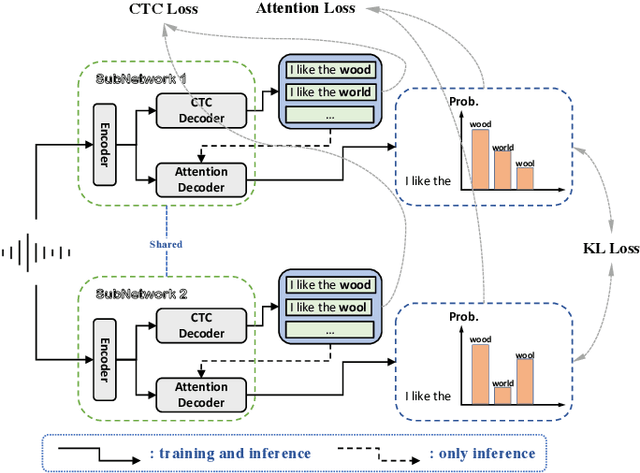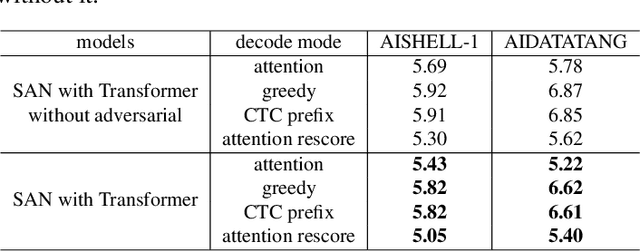Guanhua Huang
Adaptive Termination for Multi-round Parallel Reasoning: An Universal Semantic Entropy-Guided Framework
Jul 09, 2025Abstract:Recent advances in large language models (LLMs) have accelerated progress toward artificial general intelligence, with inference-time scaling emerging as a key technique. Contemporary approaches leverage either sequential reasoning (iteratively extending chains of thought) or parallel reasoning (generating multiple solutions simultaneously) to scale inference. However, both paradigms face fundamental limitations: sequential scaling typically relies on arbitrary token budgets for termination, leading to inefficiency or premature cutoff; while parallel scaling often lacks coordination among parallel branches and requires intrusive fine-tuning to perform effectively. In light of these challenges, we aim to design a flexible test-time collaborative inference framework that exploits the complementary strengths of both sequential and parallel reasoning paradigms. Towards this goal, the core challenge lies in developing an efficient and accurate intrinsic quality metric to assess model responses during collaborative inference, enabling dynamic control and early termination of the reasoning trace. To address this challenge, we introduce semantic entropy (SE), which quantifies the semantic diversity of parallel model responses and serves as a robust indicator of reasoning quality due to its strong negative correlation with accuracy...
PaSa: An LLM Agent for Comprehensive Academic Paper Search
Jan 17, 2025



Abstract:We introduce PaSa, an advanced Paper Search agent powered by large language models. PaSa can autonomously make a series of decisions, including invoking search tools, reading papers, and selecting relevant references, to ultimately obtain comprehensive and accurate results for complex scholarly queries. We optimize PaSa using reinforcement learning with a synthetic dataset, AutoScholarQuery, which includes 35k fine-grained academic queries and corresponding papers sourced from top-tier AI conference publications. Additionally, we develop RealScholarQuery, a benchmark collecting real-world academic queries to assess PaSa performance in more realistic scenarios. Despite being trained on synthetic data, PaSa significantly outperforms existing baselines on RealScholarQuery, including Google, Google Scholar, Google with GPT-4 for paraphrased queries, chatGPT (search-enabled GPT-4o), GPT-o1, and PaSa-GPT-4o (PaSa implemented by prompting GPT-4o). Notably, PaSa-7B surpasses the best Google-based baseline, Google with GPT-4o, by 37.78% in recall@20 and 39.90% in recall@50. It also exceeds PaSa-GPT-4o by 30.36% in recall and 4.25% in precision. Model, datasets, and code are available at https://github.com/bytedance/pasa.
Are AI-Generated Text Detectors Robust to Adversarial Perturbations?
Jun 03, 2024



Abstract:The widespread use of large language models (LLMs) has sparked concerns about the potential misuse of AI-generated text, as these models can produce content that closely resembles human-generated text. Current detectors for AI-generated text (AIGT) lack robustness against adversarial perturbations, with even minor changes in characters or words causing a reversal in distinguishing between human-created and AI-generated text. This paper investigates the robustness of existing AIGT detection methods and introduces a novel detector, the Siamese Calibrated Reconstruction Network (SCRN). The SCRN employs a reconstruction network to add and remove noise from text, extracting a semantic representation that is robust to local perturbations. We also propose a siamese calibration technique to train the model to make equally confidence predictions under different noise, which improves the model's robustness against adversarial perturbations. Experiments on four publicly available datasets show that the SCRN outperforms all baseline methods, achieving 6.5\%-18.25\% absolute accuracy improvement over the best baseline method under adversarial attacks. Moreover, it exhibits superior generalizability in cross-domain, cross-genre, and mixed-source scenarios. The code is available at \url{https://github.com/CarlanLark/Robust-AIGC-Detector}.
Improving Generalization and Convergence by Enhancing Implicit Regularization
May 31, 2024



Abstract:In this work, we propose an Implicit Regularization Enhancement (IRE) framework to accelerate the discovery of flat solutions in deep learning, thereby improving generalization and convergence. Specifically, IRE decouples the dynamics of flat and sharp directions, which boosts the sharpness reduction along flat directions while maintaining the training stability in sharp directions. We show that IRE can be practically incorporated with {\em generic base optimizers} without introducing significant computational overload. Experiments show that IRE consistently improves the generalization performance for image classification tasks across a variety of benchmark datasets (CIFAR-10/100, ImageNet) and models (ResNets and ViTs). Surprisingly, IRE also achieves a $2\times$ {\em speed-up} compared to AdamW in the pre-training of Llama models (of sizes ranging from 60M to 229M) on datasets including Wikitext-103, Minipile, and Openwebtext. Moreover, we provide theoretical guarantees, showing that IRE can substantially accelerate the convergence towards flat minima in Sharpness-aware Minimization (SAM).
AGILE: A Novel Framework of LLM Agents
May 23, 2024



Abstract:We introduce a novel framework of LLM agents named AGILE (AGent that Interacts and Learns from Environments) designed to perform complex conversational tasks with users, leveraging LLMs, memory, tools, and interactions with experts. The agent's abilities include not only conversation but also reflection, utilization of tools, and consultation with experts. We formulate the construction of such an LLM agent as a reinforcement learning problem, in which the LLM serves as the policy model. We fine-tune the LLM using labeled data of actions and the PPO algorithm. We focus on question answering and release a dataset for agents called ProductQA, comprising challenging questions in online shopping. Our extensive experiments on ProductQA and MedMCQA show that AGILE agents based on 13B and 7B LLMs trained with PPO can outperform GPT-4 agents. Our ablation study highlights the indispensability of memory, tools, consultation, reflection, and reinforcement learning in achieving the agent's strong performance.
SAN: a robust end-to-end ASR model architecture
Oct 27, 2022



Abstract:In this paper, we propose a novel Siamese Adversarial Network (SAN) architecture for automatic speech recognition, which aims at solving the difficulty of fuzzy audio recognition. Specifically, SAN constructs two sub-networks to differentiate the audio feature input and then introduces a loss to unify the output distribution of these sub-networks. Adversarial learning enables the network to capture more essential acoustic features and helps the models achieve better performance when encountering fuzzy audio input. We conduct numerical experiments with the SAN model on several datasets for the automatic speech recognition task. All experimental results show that the siamese adversarial nets significantly reduce the character error rate (CER). Specifically, we achieve a new state of art 4.37 CER without language model on the AISHELL-1 dataset, which leads to around 5% relative CER reduction. To reveal the generality of the siamese adversarial net, we also conduct experiments on the phoneme recognition task, which also shows the superiority of the siamese adversarial network.
The Knowledge Graph for Macroeconomic Analysis with Alternative Big Data
Oct 11, 2020Abstract:The current knowledge system of macroeconomics is built on interactions among a small number of variables, since traditional macroeconomic models can mostly handle a handful of inputs. Recent work using big data suggests that a much larger number of variables are active in driving the dynamics of the aggregate economy. In this paper, we introduce a knowledge graph (KG) that consists of not only linkages between traditional economic variables but also new alternative big data variables. We extract these new variables and the linkages by applying advanced natural language processing (NLP) tools on the massive textual data of academic literature and research reports. As one example of the potential applications, we use it as the prior knowledge to select variables for economic forecasting models in macroeconomics. Compared to statistical variable selection methods, KG-based methods achieve significantly higher forecasting accuracy, especially for long run forecasts.
 Add to Chrome
Add to Chrome Add to Firefox
Add to Firefox Add to Edge
Add to Edge